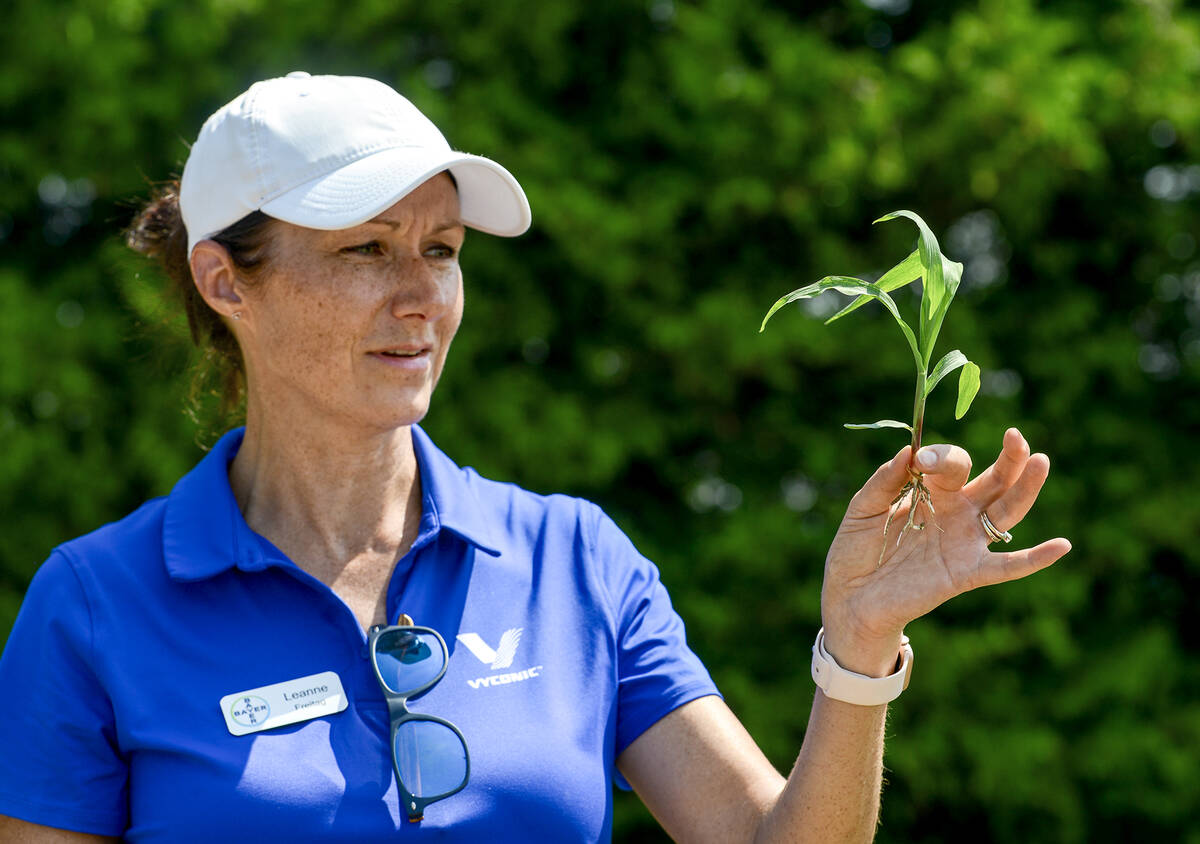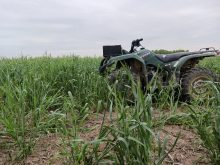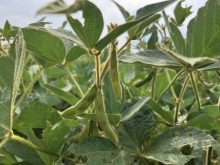Leanne Freitag laid out a perplexing corn stage and spray scenario at the Ontario Weed Tour at the Elora Research Station, July 16.
Holding up several corn stalks nearly ready to tassel, but goosenecked with fused roots, the Bayer Crop Science agronomic solutions advisor asked participants to assess what had happened.
“My corn looked awesome until just a few days ago, and all of a sudden it looks like this,” Freitag began. “Look at the tassels. Some of it’s definitely not going to be able to come out of there. I don’t know what the heck is going on.”
Read Also

Packer buys Green Giant, Le Sieur veg brands from U.S. owner
A Quebec-based processor’s deal to buy the Green Giant and Le Sieur packaged and frozen vegetable brands in Canada from a U.S. owner clarifies the status of two popular retail brands grown by Canadian farmers.
Why it matters: Plant staging accuracy, timing and weather conditions can significantly impact crop health and yield related to herbicide application.
Max Van den Borre, a BASF sales intern and University of Guelph Food and Agricultural Business student, played the role of an agronomist, peppering Freitag with questions.
When was the corn sprayed, and at what stage was it? What was used in the sprayer previously, and was this injury widespread or occurring in specific areas, such as the headlands, low or high areas of the field?
She answered the rapid-fire questions just as quickly.
At the end of May, at about the four- or five-leaf stage, she sprayed Roundup and Marksman at a rate of one litre per acre, with no potential sprayer input contamination. She’d used Roundup on some beans previously, and she’d never encountered previous incidents of injury with the application, noting it was not a Dicamba-sensitive hybrid.
“It was just in a few areas of the field; not every plant was like this, but there were areas where every plant was and then the odd one otherwise. There wasn’t really a pattern,” she said. “Maybe (in) the better parts of the field.”
It was that final statement that Van den Borre seized on.
“Was the crop more advanced in those areas? What was that stage? How did you stage it?” he questioned.
Freitag smiled, acknowledging she was impressed with the calibre of questioning.
“I didn’t really walk the whole field. Most of it looked like it was four- or five-leaf stage. I guess some of it could have been a little further ahead. I’m not sure,” Freitag said. “I just looked at it – one, two, three, four. The label goes up to five-leaf, so I figured I was pretty safe. But after I sprayed, it got really cold (at night), and (the temperatures) weren’t too bad during the day.”
With that, Freitag started a lesson on how improper staging and weather can wreak havoc on plant development because, despite Dicamba’s five-leaf label, she prefers to apply it no later than four-leaf.
“If it was on the upper end of that (five-leaf) staging or beyond, and those fluctuating temperatures – I think that combination is what hit it,” said Frietag.
BASF’s Distinct products have a little more latitude for later applications, but the early post-emerge products require extra care, she reiterated.
Participants debated whether Freitag’s early-stage corn plant example’s top leaf was considered “over” with another leaf emerging. Freitag said producers should overestimate leaf stage rather than underestimate, noting the coleoptile — the first, shorter, round-tip leaf — counts, even if removed, because the plant recognizes it was there. It’s possible the producer didn’t count it, she theorized.
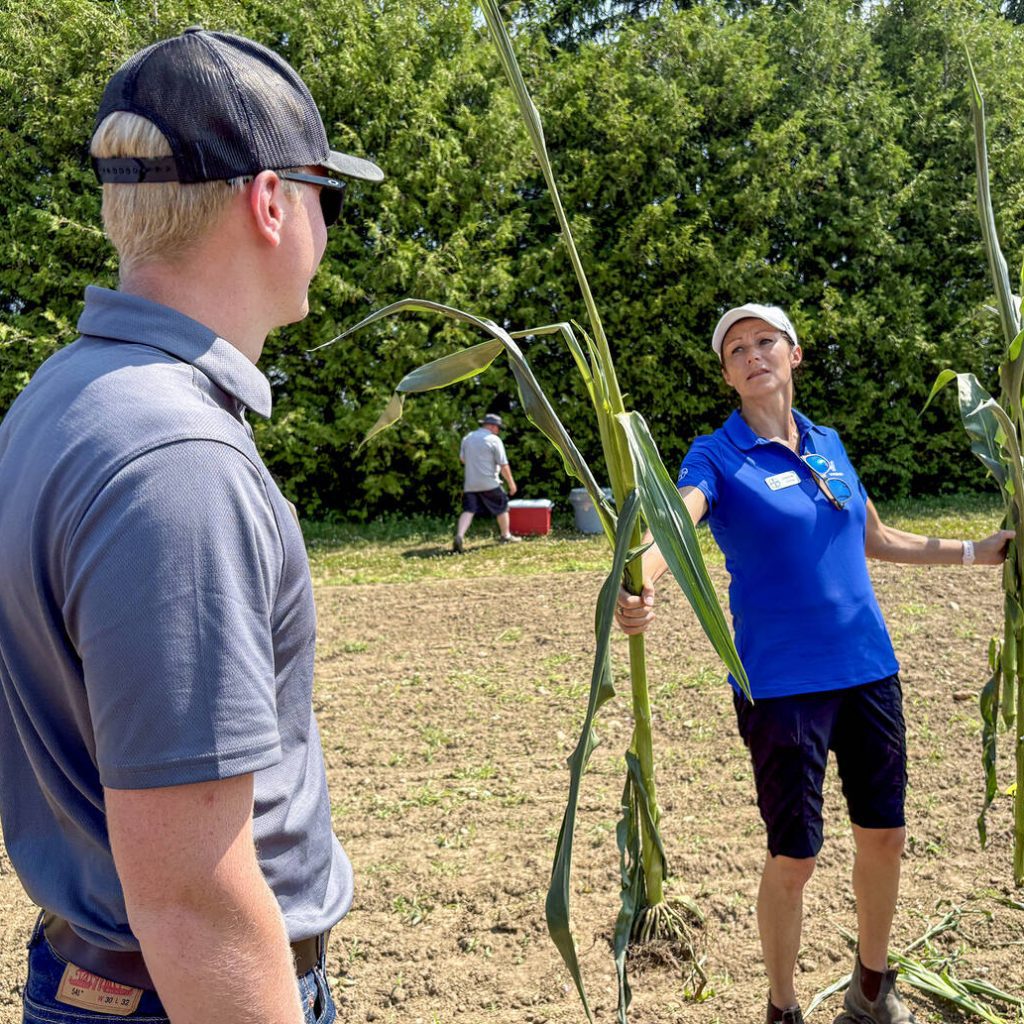
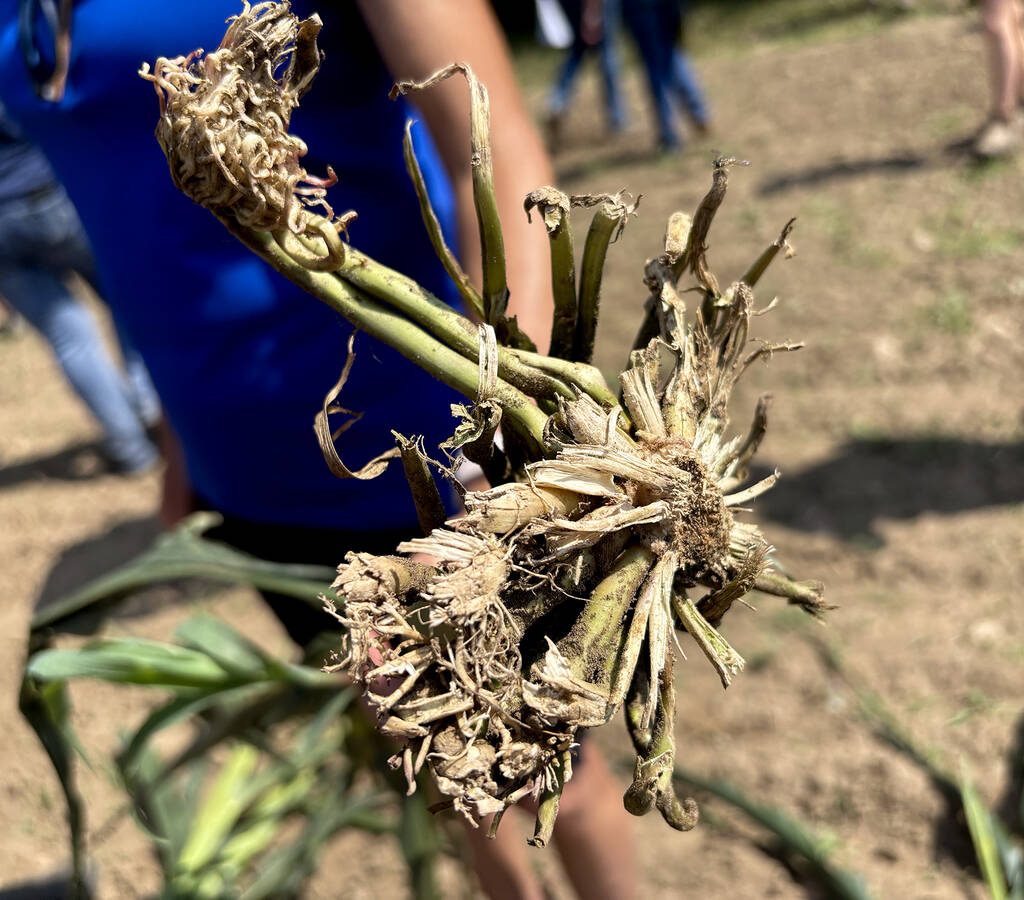
“It’s really easy to stage corn wrong,” she said. “It’s critical that the applicator knows, or farmer knows – whoever’s making that call on when to spray – knows. Especially with any Dicamba products.”
Fluctuating temperatures can influence the staging throughout the field and impact how Dicamba application metabolizes the corn once it hits the rapid growth phase.
Last year, she assessed a field sprayed with Dicamba and Marksman at the six- to seven-leaf stage, which displayed some goosenecking and twisting.
“The farmer kind of laughed at me that I was panicking that he did that,” Freitag said, adding excellent growing conditions at application and after likely minimized the impact, resulting in a 200-bushel yield.
She explained that two weeks of cold, harsh weather could have stunted corn height but not the leaf stage, leaving producers focused on height because they “always spray it when it’s about three or four inches tall,” caught off guard by the actual number of leaves.
The examples Freitag showed didn’t leave much hope for ear development, in her opinion, but there are enough normal-looking plants that she’s hopeful pollination shouldn’t be an issue for the rest.
“I’m losing hope on the tassel,” she said, flipping the plant to display a gnarled root ball. “It’s fused right tight together. There’s a little bit open at the top, but that tassel is going to really struggle to get out.”


